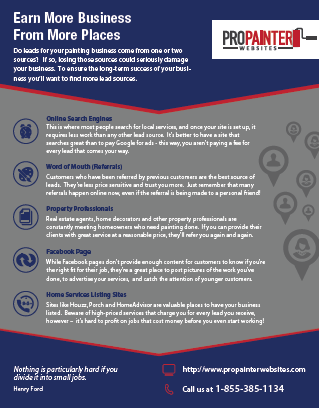Examine The Duty Of Seasonal Factors In The Success Of Commercial External Painting And Discover The Very Best Times To Protect Long Lasting Outcomes For Your Job
Examine The Duty Of Seasonal Factors In The Success Of Commercial External Painting And Discover The Very Best Times To Protect Long Lasting Outcomes For Your Job
Blog Article
Write-Up Developed By-McLamb Rodriquez
When you're preparing an industrial external painting job, seasonal variables can make or break your results. You'll want to consider exactly how temperature and moisture impact paint application and drying times. Picking visit this backlink can guarantee your paint sticks properly and lasts much longer. But which periods are really the best for this sort of job? Let's explore the key elements that can influence your project's success.
The Impact of Temperature Level on Paint Application
When you're planning an industrial external paint project, the temperature can substantially affect how well the paint sticks and dries out.
Ideally, you intend to repaint when temperature levels range between 50 ° F and 85 ° F. If it's too chilly, the paint might not heal appropriately, causing issues like peeling or splitting.
On the other side, if it's as well hot, the paint can dry too swiftly, protecting against appropriate bond and leading to an unequal surface.
You should also consider the moment of day; morning or late afternoon supplies cooler temperatures, which can be much more beneficial.
Constantly examine the producer's recommendations for the specific paint you're making use of, as they usually offer guidance on the suitable temperature array for ideal results.
Humidity and Its Result on Drying Times
Temperature level isn't the only ecological factor that influences your business exterior paint job; humidity plays a substantial duty as well. High moisture levels can slow down drying out times significantly, affecting the total top quality of your paint job.
When the air is saturated with dampness, the paint takes longer to cure, which can bring about problems like inadequate attachment and a higher risk of mildew growth. If read article on a specifically damp day, be planned for extended wait times in between layers.
It's critical to monitor local weather and strategy appropriately. Ideally, https://find-a-painter-near-me19763.blue-blogs.com/41813540/rise-your-home-s-visual-appeal-the-benefits-of-making-use-of-professional-house-paint-services for moisture levels between 40% and 70% for ideal drying out.
Maintaining these factors in mind ensures your job stays on track and provides an enduring coating.
Best Seasons for Commercial Exterior Paint Projects
What's the best season for your industrial external painting tasks?
Springtime and early autumn are commonly your best bets. During these seasons, temperatures are moderate, and humidity degrees are typically lower, creating perfect conditions for paint application and drying.
Prevent summer season's intense heat, which can trigger paint to completely dry as well rapidly, leading to poor adhesion and surface. Similarly, wintertime's cold temperatures can prevent proper drying out and treating, taking the chance of the durability of your paint work.
Go for days with temperature levels in between 50 ° F and 85 ° F for optimum results. Bear in mind to check the local weather prediction for rainfall, as wet problems can ruin your task.
Preparation around these factors guarantees your painting project runs smoothly and lasts longer.
Verdict
Finally, preparing your commercial outside painting projects around seasonal factors to consider can make a considerable distinction in the outcome. By organizing job during the perfect temperatures and humidity levels, you'll guarantee much better attachment and drying out times. Remember to watch on neighborhood weather report and choose the right time of year-- springtime and early autumn are your best choices. Taking these actions will aid you achieve a long lasting and specialist finish that lasts.
